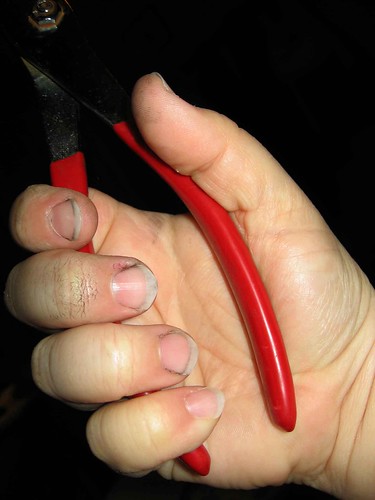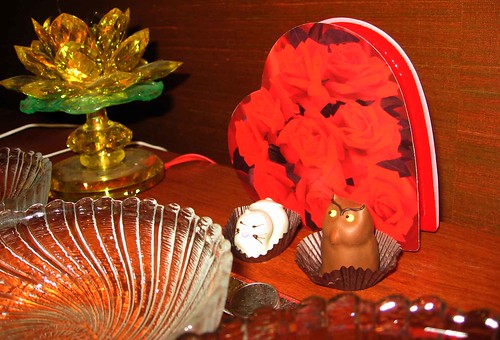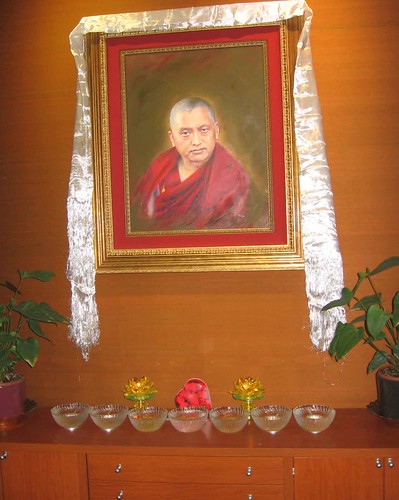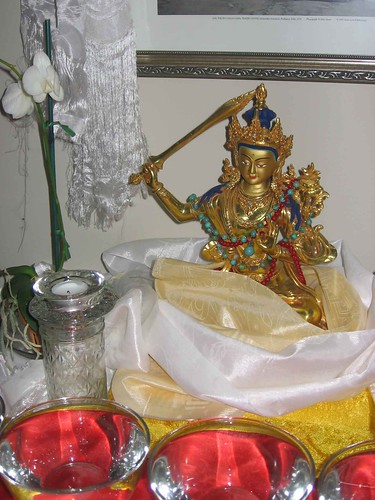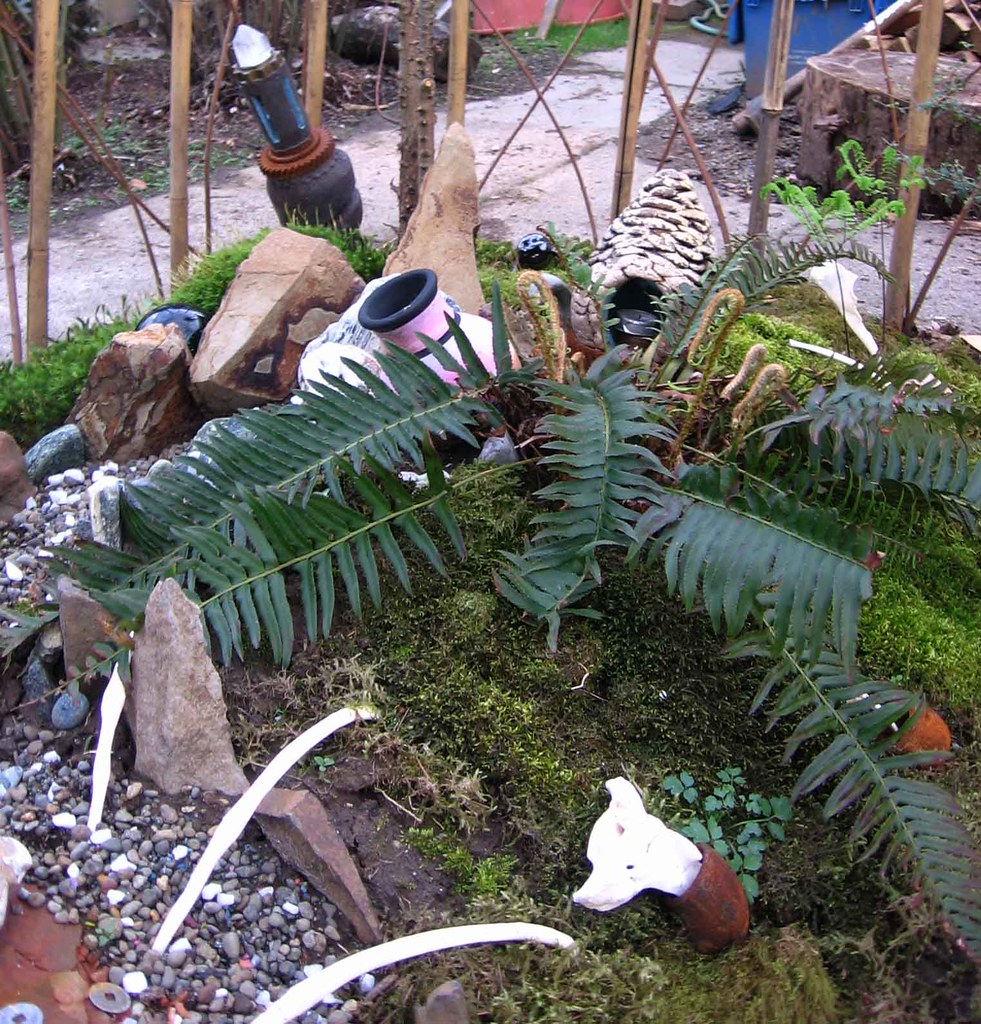Last month I briefly mentioned I attended the Annual Meeting of the NW Dharma Association. The April/May Dharma News focused on mahasangha, which the Executive Director Timothy O'Brien defined in modern usage "as a term denoting the nonsectarian Buddhist community, united by their allegiances to the Buddhadharma regardless of doctrinal, sectarian, or cultural differences." OK that was news to me. For the non-Buddhists out there, that probably would be confusing to Buddhists, so don't feel bad. Short version, "All my Buddhist relations." It seems to me meant to get around the snits that arise around the definition of sangha. Some more traditional or conservative sects will say it can only mean a community of ordained monastics. In my Zen sect I was taught it is my spiritual community, which could include all beings and elements of nature.
At the end of February when articles were due for April/May, there was some confusion over just who was going to write up the day's conversations. The one who knew was out of commission, so I took a chance and spent a day listening to my recordings and wrote it up. I'd recorded the small group reports back to the larger group, just in case...very useful for getting exact quotes. I am so happy with my $80 digital recorder. It was a good thing, because they needed that article.
Now that the issue is published, here it is as I wrote it. I haven't compared, don't know if it was edited much.
Figuring Out Sangha
The jewel of sangha sparkled through the day at the annual meeting in February. During the morning, participants broke into small groups and discussed the question, "What is sangha?" Visual metaphors emerged, that sangha "is like the family tree. Wherever you decide to snip off the branch and decide, this is my sangha, is an arbitrary decision."
People said,
"Sangha provides a life of sanity and purpose."
"Sangha is what makes the impossible possible."
"This is where you come back to the dhamma."
"Sangha is refuge, a safe place."
The various groups grappled with the balance of the protective aspect of sangha, but also inclusiveness. There are layers of sangha, ultimately including the cosmos. The question remains, what is adaptable about sangha? What is fundamental, and what is elastic? Timothy said, "Our job is diversity, that we unite around the fundamentals and that we preserve the purity of the various traditions. That is a real dance."
In the afternoon we broke into groups based on our topic of interest; sangha arose often as a uniting thread. How do we create and sustain sangha? What does sangha look like in a rural setting, in small groups, in groups without a single teacher? How can sangha help West meet East? How do sanghas get engaged, and help individuals bring their spiritual practice out into the world?
Sustainability
This group focused on the questions: How do we create sangha? and How do we sustain sangha? Practical concerns raised included understanding tax status, modes of communication, fundraising, supporting teachers, and use of technology. There are ways in which dharma can be intertwined with practical needs, and they wished to keep in mind that sangha is community, not the place, or the building.
Some general rules they came up with:
· Start small
· Keep a low overhead (out of the home, many different models for that)
· Know your zoning before you even start
· Develop communication: use internet, email, googling
· Establish dialog in larger community: giving service gives back; hold open houses; hire local people; partner with like-minded groups like the Unitarians
· Have transparency with money
· It's a stronger sangha that relies on the talent and experience of many rather than a sangha that relies on just one teacher or one resource
There was included in this a dialog of ethics and dharma in the use of money, in altruism, and in outreach. It was important that as teachers they never refuse teachings on the basis of money, always to operate with generosity of the dharma. Fundraising can happen through community outreach, open houses, being a good neighbor, through doing good. An example was given of receiving federal funds for cleaning up land. Altruism as a practice can be modeled; there is a dialog between people that want to give, and people that need. The question whether to charge dues or rely on dana seemed to be an extended dialog.
Small, Rural, and Alternate Sanghas
The main question to be addressed in rural or alternative sanghas was how to deal with very different approaches and traditions, and how to incorporate those into sangha. One person said, "Getting people together from different traditions can bring divisiveness between people in a group. We need to remind ourselves that we need each other, need to find that basic support for the fundamental practice, and figure out how to allow people from different traditions to be comfortable practicing together."
In rural areas, practitioners can't afford to be exclusive. Not only are there different traditions represented, but people come from different towns. Concerns of rural sanghas are also shared by urban sanghas: diversity; sustainability; large percentage of Western practitioners that are unaffiliated with any sangha.
Some practical approaches are unique to rural settings and provide some advantages. Money is not much of an issue, and arrangements themselves are alternative. People meet in people's homes or in churches. It may be less formal a practice than a specific lineage. One person said, "Differences are positive, are to be accepted, celebrated, and enjoyed." Another advised, "When dealing with the different traditions, the best tradition is to keep it to the simplest form, the original Dharma. With the Triple Gem, the Four Noble Truths, the Eightfold Path, you can't go wrong."
West Meets East
What is sacred? What can be shared? These were the questions held by this group. The spokesperson said, "We have an obligation to take care not to lose the meaning of the original teachings as we adapt them. There is the importance in finding the core meaning, in taking care in how we translate the dharma." When importing the teaching, it is important to think of what it is like for the teachers to come to the west, to train Westerners, and to navigate social interactions.
There has been slow progress in bridging the gaps. This intersection of West and East takes awareness and respect. For example with some ethnic communities, there is some reluctance to even go to the temple if they're not actively practicing the precepts. Also robes can mean different things in different traditions, sometimes a scholar, sometimes not. Knowledge of language that won't offend is a key skill. Converts can gain connections by attending ethnic folk festivals. Converts would do well to learn the various ways teachers are recognized and authorized in different traditions.
Engaged Buddhism
[I participated in this group, so it was hard to keep myself out of the reporting.]
How do we bring our practice into worldly situations? How do we get people involved? These were the leading questions going into this dialog. When we raise the issue of Engaged Buddhism, it quickly gets complicated. There are many ways a person can choose to engage in the world, and there are many ways to agonize over best practices or choices of action.
As Buddhist practitioners we can bring the peace of our practice to the world of action. We can make the dharma accessible to an arena that can bring on passion, frustration, and burnout. While contemplation and action seem to be opposing principles, they actually are a foundation of Buddhism. Compassion and insight, the will to help aligned with the wisdom of emptiness, these unite together in bodhicitta. Our spiritual practice is not really tested until we bring it out into the world.
There is a need for awareness. Is our meditative practice selfish, a denial or escape from the world? Is our activism a kind of escape from inner awareness? Several years ago I attended a weekend of nonviolence training from the Fellowship of Reconciliation. They shared the phrase, "Picket and Pray. Picket and Pray." Catholics have the need to balance action and insight and we can learn from them too. Perhaps our slogan can be, "Meditate and March. Meditate and March."
In addition to balancing action and contemplation, there are many ways we can trip up over which action to take. The spokesperson said, "We agonized. Is it valuable to be involved in the political process? Are we spinning our wheels or are we making incremental change? How much of our energy is focused on the symptom, how much on the cause?" The question occurs to me, does that matter, or is taking action also a matter of trying and testing, practicing and making mistakes?
Engagement can manifest in our daily lives through individual choices. The questions arose, "How can we stretch ourselves to do more? How can we do this in our sanghas, not just as individuals?" Since there are so many avenues through which we can address the suffering of this modern world, we can all be stretched pretty thin. How can we coordinate efforts? The idea arose for an Engaged Buddhist Challenge: challenge sanghas to choose an engaged focus, and invite individuals to cross-pollinate between sanghas for their social action of choice. This would have an added benefit of greater interconnection between sanghas. Larger sanghas may already have more than one focus they can share.
Some possible engaged activities:
· Educating children
· Hospice work
· Prison work
· Green sanghas
· Interfaith connections
· Peace/ No war
· Corporate power
· Political campaigns (with 501c3 awareness)
· Money investment awareness
Points of Action: How NWDA Can Help
· Publish a handbook on organizing and sustaining sangha. (Sustainability; Rural/Alternate Sanghas)
· Help link people in neighboring towns. List or share individual members of NWDA in an area through a web database, or release the relevant portion of the member database to a contact person or organizer, rather than public publishing. (Rural/Alternate Sanghas)
· Organize circuit riders, a bureau of speakers and teachers willing to travel to rural areas. (Rural/Alternate Sanghas)
· Offer web-hosting for small sanghas (Rural/Alternate Sanghas)
· Sponsor forums for the public to learn about Asian traditions (West Meets East)
· Sponsor forums for peer-to-peer dialog, for teachers, leaders, sanghas (West Meets East)
· Provide information/best practices on religious visas (West Meets East)
· Sponsor (or co-sponsor with other Engaged Buddhist groups) an Engaged Buddhist Challenge to the Sanghas (Engaged Buddhism)

